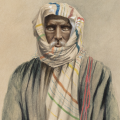Sorry if anyone has posted it early but i had to share with you'all
http://www.nytimes.com/2008/05/17/world/africa/17somalia.html?_r=1&ref=africa&oref=slogin
The global food crisis has arrived at Safia Ali’s hut.
Skip to next paragraph
Enlarge This Image
Jehad Nga for The New York Times
After three seasons of below-average rainfall, the people of central Somalia are beginning to fear the worst. Safia Ali, mother of five, has not eaten in seven days. Her 1-year old son, Farhan, has fallen ill.
Related
Times Topics: Ethiopia
Times Topics: Somalia
Enlarge This Image
Jehad Nga for The New York Times
Safia Ali in her hut in Dagaari. "She will most likely die," an elder said of the starving woman.
She cannot afford rice or wheat or powdered milk anymore.
At the same time, a drought has decimated her family’s herd of goats, turning their sole livelihood into a pile of bleached bones and papery skin.
The result is that Ms. Safia, a 25-year-old mother of five, has not eaten in a week. Her 1-year-old son is starving too, an adorable, listless boy who doesn’t even respond to a pinch.
Somalia — and much of the volatile Horn of Africa, for that matter — was about the last place on earth that needed a food crisis. Even before commodity prices started shooting up around the globe, civil war, displacement and imperiled aid operations had pushed many people here to the brink of famine.
But now with food costs spiraling out of reach and the livestock that people live off of dropping dead in the sand, villagers across this sun-blasted landscape say hundreds of people are dying of hunger and thirst.
This is what happens, economists say, when the global food crisis meets local chaos.
“We’re really in the perfect storm,” said Jeffrey D. Sachs, a Columbia economist and top United Nations adviser, who recently visited neighboring Kenya.
There has been a collision of troubles throughout the region: skimpy rainfall, disastrous harvests, soaring food prices, dying livestock, escalating violence, out-of-control inflation, and shrinking food aid because of many of these factors.
Across the border in Ethiopia, in the war-racked ****** region, the situation sounds just as dire. In Darfur, the United Nations has had to cut food rations because of a rise in banditry that endangers aid deliveries. Kenya is looking vulnerable, too.
A recent headline in one of Kenya’s leading newspapers blared, “25,000 villagers risk starving,” referring to a combination of drought, higher fertilizer and fuel costs and postelection violence that displaced thousands of farmers. “These places aren’t on the brink,” Mr. Sachs said. “They’ve gone over the cliff.”
Many Somalis are trying to stave off starvation with a thin gruel made from mashed thorn-tree branches called jerrin. Some village elders said their children were chewing on their own lips and tongues because they had no food. The weather has been merciless — intensely hot days, followed by cruelly clear nights.
This week, Saida Mohamed Afrah, another emaciated mother, left her two children under a tree and went scavenging for food and water. When she came back two hours later, her children were dead.
She had little to say about the drought. “I just wish my children had died in my lap,” she said.
The United Nations has declared a wide swath of central Somalia a humanitarian emergency, the final stage before a full-blown famine. But Christian Balslev-Olesen, the head of Unicef operations in Somalia, said the situation was likely to become a famine in the coming weeks.
Famine is defined by several criteria, including malnutrition, mortality, food and water scarcity and destruction of livelihood. Some of those factors, like an acute malnutrition rate of 24 percent in some areas of Somalia, have already soared past emergency thresholds and are closing in on famine range. Mr. Balslev-Olesen said Unicef recently received reports of people dying from hunger and thirst. It is hard to know exactly how many, he said, though local elders have put the number in the mid-hundreds.
“We have all the indicators in place for a catastrophe,” Mr. Balslev-Olesen said. “We cannot call it that yet. But I’m very much concerned it’s just a matter of weeks until we have to.”
Many people already consider Somalia a catastrophe. It has some of the highest malnutrition rates anywhere in the world — in a good year. The collapse of the central government in 1991 plunged Somalia into a spiral of clan-driven bloodshed that it has yet to pull out of. The era began with a famine that killed hundreds of thousands of people.
The consensus now is that all the same elements of the early 1990s — high-intensity conflict, widespread displacement and drought — are lining up again, and at a time of the biggest spike in global food prices in more than 30 years. The United Nations says 2.6 million Somalis need assistance and the number could soon swell to 3.5 million, nearly half the estimated population. If there is excellent rain or a sudden peace, the crisis may ease. But weather projections and even the rosiest political forecasts do not predict that.
Whether Somalia slips into a famine may depend on aid, and right now, that does not look so good either. Eleven aid workers have been killed this year, and United Nations officials say Somalia is as complicated — and dangerous — as ever.
Skip to next paragraph
The New York Times
People are dying of hunger in and around Dagaari.
Related
Times Topics: Ethiopia
Times Topics: Somalia
Enlarge This Image
Jehad Nga for The New York Times
The police in Somalia stood near the corpses of lambs in Dagaari. Drought is killing livestock and destroying livelihoods.
Beyond the warlord and clan fighting, there is now a budding conflict with Western aid workers. The Bush administration has said that terrorists with Al Qaeda are hiding in Somalia, sheltered by local Islamists, and has gone after them with American airstrikes. But a recent American attack on an Islamist leader in Dusa Marreb, a town in the center of the drought zone, has spawned a wave of revenge threats against Western aid workers. The United Nations and private aid organizations say it is now too dangerous to expand their life-saving work in Dusa Marreb.
“We’re in a different contextual environment right now,” said Chris Smoot, the program director for World Vision aid projects in Somalia. He said there were anti-Western “rogue elements that can shut you down, in any shape or form, at any time.”
Aid is also a serious problem in the contested ****** region of Ethiopia, across the border from here. A recent report written by a contractor working for the United States Agency for International Development said the drought there was “clearly worsening” and that the response by the Ethiopian government, one of America’s closest allies in Africa, was “absolutely abysmal.”
This may be no accident. The Ethiopian government is struggling with an insurgency in the ******, and the report said that “food is clearly being used as a weapon,” with the government starving out rebel areas, while a mysterious warehouse of American-donated food was discovered across the road from an Ethiopian Army base. “The U.S.G.,” meaning the United States government, “cannot in good conscience allow the food operation to continue in its current manifestation,” the report said. “This situation would be absolutely shameful in any other country.”
The report was not made public, though a copy was provided to The New York Times. When asked about it, a senior American aid official characterized the report as “just a snapshot and one person’s observations and impressions.” But the senior aid official, who spoke on condition of anonymity, also said: “We’re not saying there’s not a crisis in the ******. We’re not saying the Ethiopian response has been satisfactory. But some progress has been made. And we need more.”
Ethiopian officials declined comment and have denied human rights abuses in the ******.
All across this region, one of the poorest of the poor, people are left to the mercies of the desert. In central Somalia, for instance, fewer than five inches of rain have fallen in the past year and a half, aid officials say. The winds are harsh, throats are dry. This area, like much of the Horn of Africa, is too arid for farming. The people here, in lonely outposts like Dagaari, survive by grazing goats, sheep, cattle and camels, selling the animals for money they use to buy food.
“But nobody wants a skinny goat,” explained Abdul Kadir Nur, a herder in Dagaari.
That was about all he had left after the drought killed 400 of his 450 animals.
Not far from the pile of goat bones is a circle of stones. It is the grave of his toddler son.
Mr. Abdul Kadir said the boy had died of hunger and that he had been placed in his grave at an angle, “so he can sleep.”
He walked a few more steps, his flip-flops digging into the crunchy earth. He arrived at Ms. Safia’s hut, where several people were peering in the doorway, watching her sweat on the dirt floor. The nearest hospital was only a half hour away, but nobody had any money to pay for a ride.
“She will most likely die,” an elder said and walked away.
Ms. Safia’s son seemed to sense that. He curled up next to his mother while he still could, his face pressed against the damp cloth that covered her. Her ribs moved up and down, up and down, in quick shallow breaths.





